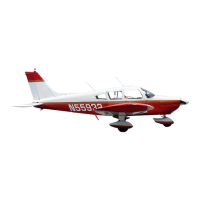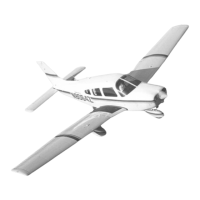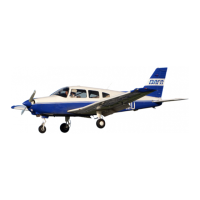SECTION
5
PERFORMANCE
PIPER AIRCRAI-T CORPORÄTION
PA.28.I81,
ARCHER
II
(b)
Takeoff and Landing
After
determining
the aircraft Loading,
all aspects of
takeoff
and landing musr be considcrcd-
Condilions of the deparrure and dcstination airport musl be
acqrired, evaluaied and mainhined ttuoughout
üe
fligh!.
Apply
üe deparlurc airpor! conditions and takeoff ieight !o
lhe appropriatc
Takeoff Performance
graph
(Figure
5-7 or 5-9) ro
determrne
the
lengü of runway necessary for
lhe takeoff and,/or the
barricr distanco,
The lsnding
dislancc calcülations are
performed
in the same
männer using fie exisdng
cordrions al tie desdnalon airpo( and,
whcn
cstnblished, ftc landjng weight.
The
condi!ions and calculalions for
the example
flight are
lisrcd
bclow. The hkeoff
and
landing
disunccs rcquircd for lhe
example flight have fallen well
bclow lhe available nnway lengths.
(1)
Pressure Altilude
(2)
Tefirpera[re
(3)
wind
Componcn!
(Headwind)
(4)
Runway t€ngth Available
(5)
Runway
Required
Depärturc Destination
Airpon Airport
2000
fr.
2l
"c
IO KTS
7000 fr.
950 ft.*
23Ul fr.
2l.c
5 KTS
.{500
f!.
825 fr.**
NOTE
The remainder
of rhe
performance
chans used
in this fligh!
plan
cxample assume
a
oo wind
condition. The
effect of winds
alofl
musr
be
considered
by rhe
pilol
whcn
compuring climb,
cruisc and descent
performäüce_
*retbrencc
Figufe 5-13
**reference
Figure
5-37
REPORT: VB-U20
5-,1
ISSUED:
JULY
2, 1979
REVISEDT FERRUARY
2, 1990

